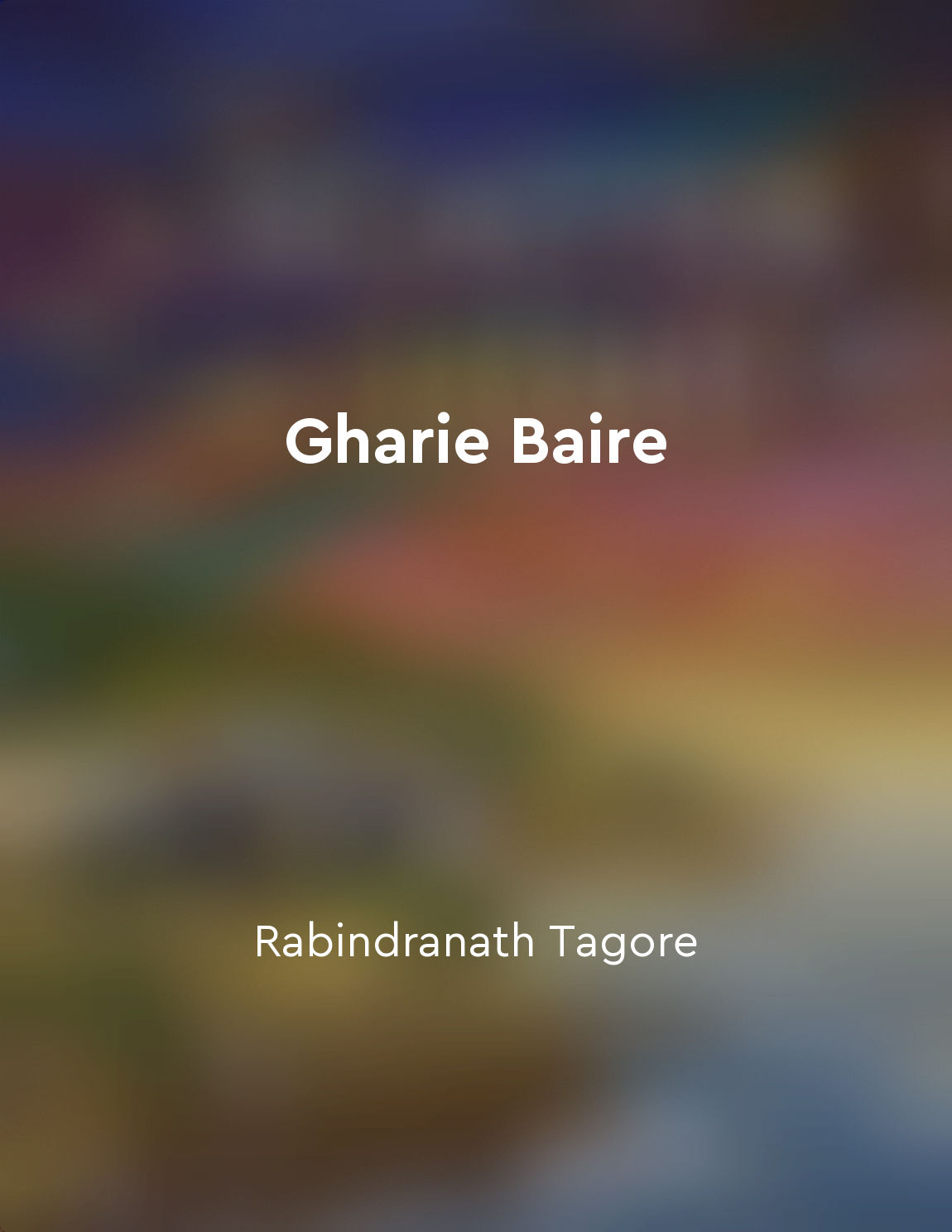

The Home and the World (in the original Bengali, Ghôre Baire or Ghare Baire, lit. "At home and outside") is a 1916 novel by Rabindranath Tagore. The book illustrates the battle Tagore had with himself, between the ideas of Western culture and revolution against the Western culture. These two ideas are portrayed in two of the main characters, Nikhil, who is rational and opposes violence, and Sandip, who will let nothing stand in his way from reaching his goals. These two opposing ideals are very important in understanding the history of the Bengal region and its contemporary problems.Near the beginning of the novel, Nikhil brings his wife Bimala to a political rally in an attempt to get her to join the outside world and get in touch better with "reality." Though Bimala had heard of Sandip before this time, and developed a somewhat negative opinion of him, this was the first time she heard Sandip speak. This event not only changes her opinion of Sandip, but affects her entire outlook on her life both at home and in the outside world.Towards the end of the book Sandip convinces Bimala to steal from her husband, Nikhil. While in the act of stealing 6,000 rupees, she comes to a realisation of the terrible crime she is committing. Bimala realises that she has made a mistake by stealing the money from Nikhil and attempts to have Amulya pawn off some of her jewellery to replace the money. Amulya attempts to give the box back, but Sandip steals it and gives it back himself. This event allows both Amulya and Bimala to see that Sandip is concerned only with himself, thus allowing them to break free from part of his web. It is during this time that Bimala realises her power over Sandip by being able to easily make him jealous.Rabindranath Tagore was a Bengali polymath, a poet, musician and artist who reshaped Bengali literature and music, as well as Indian art with Contextual Modernism in the late 19th and early 20th centuries. He became in 1913 the first non-European to win the Nobel Prize in Literature. agore's poetic songs were viewed as spiritual and mercurial; however, his "elegant prose and magical poetry" remain largely unknown outside Bengal.